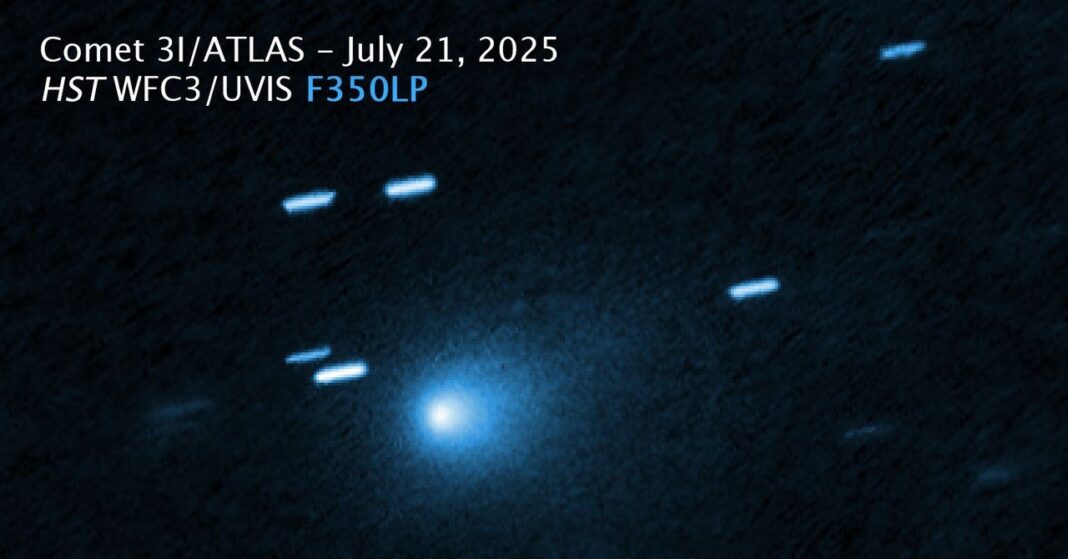After weeks of online speculation and debate fueled by conspiracy theories and podcasts like Joe Rogan’s, new evidence has solidified the scientific consensus: comet 3I/Atlas is a natural celestial object, not artificial in origin. This confirmation came from an unexpected source — radio telescopes.
While many initially assumed a “radio signal” would signify technology, this discovery wasn’t about spacecraft transmissions. The South African Radio Astronomy Observatory’s MeerKAT telescope, composed of 64 large antennas, detected specific patterns of radio absorption by hydroxyl (OH) molecules emanating from 3I/Atlas. These OH lines appear as absorption because the comet was very close to the sun and positioned in a way that favored this phenomenon over emission. This type of activity is consistent with typical comet behavior.
How Comets Glow: When comets get close to the sun, their ice sublimates into space, turning directly from solid to gas. This process releases molecules like OH which can absorb or emit radiation at specific radio frequencies due to energy transitions within those molecules. Astronomers use these OH spectral lines to map star- and water-forming regions of the universe because they “glow” brightly under certain conditions.
Putting an End to Speculation?
The detection on October 24th, five days before 3I/Atlas reached its closest point to the sun, was significant. MeerKAT had attempted similar observations earlier, but the OH absorption signal was not strong enough until closer proximity to the sun. This discovery came after astrophysicist Avi Loeb — a vocal proponent of the idea that 3I/Atlas could be technologically advanced — urged radio observatories like MeerKAT to investigate its potential radio emissions.
Loeb acknowledges that while this detection doesn’t definitively rule out artificial origins, it adds substantial weight to the natural origin hypothesis. He remains optimistic about further exploration: in 2026, the Juno spacecraft will use its antenna to search for low-frequency radio signals from 3I/Atlas during a close encounter with Jupiter.
While this latest finding might quiet some of the wilder theories surrounding 3I/Atlas, it’s unlikely to completely end all speculation. However, the debate has undoubtedly increased public interest in astrophysics and raised awareness about the scientific methods used to investigate celestial objects.
Comet enthusiasts can continue tracking its journey as 3I/Atlas moves further from our solar system with its closest approach to Earth on December 19th



























